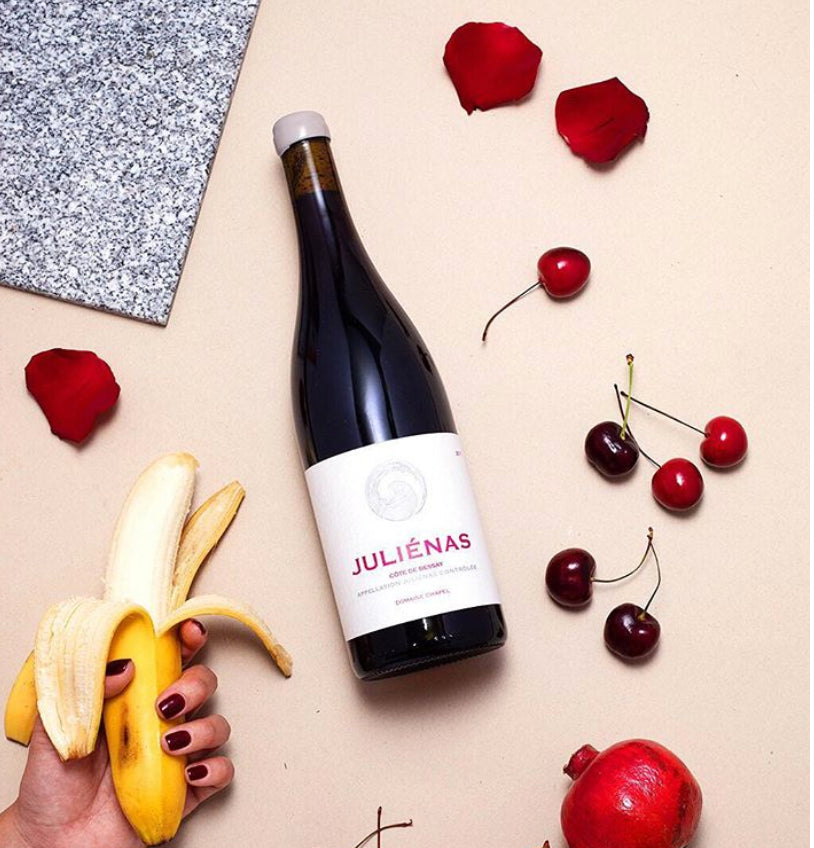All You Need to Know About the 10 Crus of Beaujolais

Beaujolais Breakdown: Everything You Need to Know About the 10 Crus
Our love for Gamay from Beaujolais knows no limits. These chuggable, earth-driven bottles are everything you want them to be: they’re juicy, they’re food-friendly, and they’re perfect for sipping chilled year-round. If you’re not already an avid Bojo drinker, we can almost guarantee that you will be soon.
Maybe you’re already a passionate fan of the region, though understanding the differences amongst its ten crus is proving tricky. Although the details may seem minor, breaking down these traits is key to knowing exactly what you’re sipping. Our ‘10 Cru Breakdown’ is certain to help!
SHOP BEAUJOLAIS
Saint-Amour
Located at the northern end of Beaujolais, this loveable cru is located just a hop, skip, and a jump away from Burgundy’s Mâcon region. Soils here are quite varied, though they’re mostly made up of granite, limestone, clay, and schist. Wines from Saint-Amour are known for being light, bright, and dominated by red fruit flavors (strawberries, cranberries, currants, etc.).
Juliénas
This next region gets its name from Roman emperor Julius Caesar, as vineyards have been cultivated in this area for over two millennia. Here, soils have higher proportions of clay, which create sturdy wines with solid structure. Wines from Juliénas are known for their flavors of ripe red fruits, crushed flower petals, and sweet spice. The majority of wines from Juliénas are best enjoyed a few years after their vintage date. 
Chénas
Chénas may be one of the smaller crus in Beaujolais, though make no mistake – these wines are fierce, floral, and pretty full-bodied for Gamay. Chénas’ name is derived from the French word chêne, which means oak tree. Chénas juice is marked by flavors of dark fruit, violets, and damp earth. When crafted at the hands of great producers, these wines can be consumed in their youth or cellared for 10+ years.
Moulin-à-Vent
Moulin-à-Vent wines are some of the most highly regarded bottles to come out of Beaujolais. The wines are known for their sturdy backbone, well-integrated tannins, and loads of natural acidity. Typical flavors found in Moulin-à-Vent wines are wild forest berries, crushed flowers, black pepper, and game. Moulin-à-Vent gets its name from the long-standing windmill monument located within the appellation.
Fleurie
Fleurie is pretty amazing. Many of our favorite winemakers call this ‘floral’ cru home, including Justin Dutraive, Yann Bertrand, and David & Michele Chapel. As its name suggests, wines from Fleurie lean on the floral-heavy side and are marked by flavors of rose petals, red fruits, violets, and sweet spice. These hauntingly aromatic bottles are beautiful in their youth, yet always shine with a few years of age on them.
SHOP BEAUJOLAIS
Chiroubles
This small, westerly cru is the highest altitude region in Beaujolais, which means that fruit here is some of the last to be harvested each vintage. Cool temperatures keep acidity high, which translates to refreshing, youthful wines that are loaded with flavors of crunchy strawberries, cranberries, pomegranate, and pepper. Although farming these slopes is hard, the fruits of these hardworking vignerons’ labor is definitely enjoyed by the masses.
Morgon
Similar to Fleurie, this second-largest cru is home to a variety of well-known producers, including all members of Kermit Lynch’s ‘Gang of Four.’ Bottles produced in this natural wine epicenter are marked by powerful flavors of meaty cherries, plums, iron, and crushed stones. Although enjoyable on their own, wines from Morgon come to life when served with grilled red meats, roasted veggies, and a variety of French-inspired bistro favorites. 
Régnié
This westerly cru was officially recognized by France’s appellation board back in 1988, making it the youngest of Beaujolais’ ten crus. The region’s pink granite soils produce vibrant grapes loaded with acid, which in turn, make energetic wines loaded with flavors of smashed raspberries, red currants, and white pepper. Régnié wines are fragrant, restrained, and ultimately best enjoyed in their youth.
Brouilly
This massive cru covers ⅕ of the total surface area of Beaujolais and is generally broken down by its two major soil types (pink granite and marly limestone). Because of these two different terroirs, wines from Brouilly fall all over the flavor spectrum. Expect lighter, more acid-driven juice from granite terroirs, and more fuller-bodied expressions from limestone soils. For typical French bistro wine in one of its finest forms, this cru’s got your back.
Côte de Brouilly
Nestled entirely within the overarching Brouilly appellation, the Côte de Brouilly’s vineyards are located on steep hillside slopes, which translates to more sun and riper fruit. These wines (similar to those from Morgon and Moulin-à-Vent) tend to be more structured and dense than bottlings from Brouilly. Common tasting notes include dark plums, cassis, bing cherries, smoke, and crushed stones. Drink these wines now, lay ‘em down, or do both. You really can’t go wrong here.

